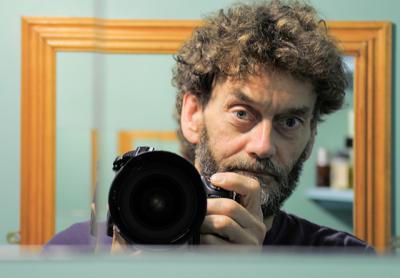Politics and Poetry Made Personal at the Parrish

Although Mario Cuomo famously said, “Campaign in poetry, govern in prose,” the reverse is more often true, especially in times of political upheaval, when stark divisions are exposed and disquieting questions about a nation’s character are raised. Throughout history, calamitous times often have us seeking solace — and wisdom — in verse.
In 2015, the United States Department of Arts and Culture, a nongovernmental organization, initiated an annual civic ritual and participatory art project called the People’s State of the Union, further solidifying the link between politics and poetry. Each January, following the State of the Union address, hundreds of communities nationwide gather in living rooms, libraries, and churches to create story circles, in which they share thoughts and reflections on the state of the nation.
In January, the Parrish Art Museum in Water Mill hosted a closed-door story circle for 50 artists, poets, designers, writers, educators, activists, and students on the East End.
A continuation of the dialogue will take place at the museum tomorrow (April is National Poetry Month) with Poetry Night: the People’s State of the Union. Ten poets, including some who were at the January circle and others who read transcripts from that evening, will read their work based on reactions to the stories. The event is open to the public.
Corinne Erni, curator of special projects at the Parrish, announced the lineup of poets: Tyler Armstrong, Star Black, Max Blagg, Megan Chaskey, Scott Chaskey, Sandra Dunn, R.J.T. Haynes, Joe Lamport, Kathryn Levy, and Tyler Allen Penny.
Ms. Levy, twice nominated for a Pushcart Prize for her poetry collections, said she had welcomed the opportunity to participate in the earlier story circle, which took place a week after the president’s inauguration. “It was a very dark time for me,” she said, “and I found it just glorious to be around people who were willing to share very personal reflections on the times. I was lifted by the experience.” Afterward, she spent a week in residency at a writers’ colony, composing verse that reflected the stories she heard that night, some of which she will read tomorrow.
For the British visual artist, poet, and environmentalist R.J.T. Haynes, “Poetry is like painting with words, and it has a strong visual element for me.” Mr. Haynes, who divides his time among Cornwall, in southwest England, Manhattan, and East Hampton, said his verse will explore the characteristics of America, which he believes are now under threat, notably the notion that anyone can succeed here regardless of background, race, or religion. “It is the most precious elements of America that now seem so precarious,” he said.
Joe Lamport, poet, novelist, and translator, was at January’s story circle, and it had a surprising effect on him. “I’m usually not a joiner or a participator, but I found myself extremely moved by the sense of people coming together during a time of extreme stress,” said Mr. Lamport. His work to be read tomorrow falls into two categories. “The first,” he explained, “describes my overall experience” on that evening; the second is a more personal interpretation — “my own voice.”
Tyler Allen Penny considers it a great privilege to be seen as a collective voice for the people. “I’m taking elements from story circle and amping them up to 11,” said Mr. Penny, who teaches poetry at Stony Brook University. He promises a 10-minute “performance poetry” at the Parrish, calling it “a collective yap in the void.”
Spoken-word poets and performers grappling with disquieting times seems to be the underlying theme for tomorrow’s Poetry Night. Is it poetry’s role to fan the flames or cool tempers?
The story circle will begin at 6 p.m. Admission is $12, free for museum members, children, and students. Reservations have been recommended.
